
This is a model of the Swedish vessel Vasa, which was brought back from the dead in 1961.
Once it was raised from the seabed it floated and was towed to the location set aside for its restoration.
I first saw the Vasa in 1965 during a visit to Stockholm during my time as a cadet in Dunera, which at that time was a school ship.
From memory when I saw her she was in a building similar to an aircraft hanger and being sprayed with a liquid to preserve the her timbers. The liquid, I believe was polyethylene glycol, and she was sprayed with PUG for seventeen years before being allowed to dry out, which is still in the process of doing today.
In 1965 the ship could only be viewed from two levels and we were not allowed to get too close. It made such an impression on me that I knew that I would return one day.
As soon as I heard of the Celebrity Silhouette’s Baltic cruise I checked to see if Stockholm was one of the ‘stops’. It was, so I booked.
The spraying of sunken wooden ships with PUG is now standard, and was used on the British vessel Mary Rose, which was in Henry the VIII’s navy, having been launched in 1511 and she sank in 1545 during a battle against the French.
The Vasa sailed from Stockholm on the 10th November in 1628. She had been ordered to sea to take part in the war, which was in progress between Sweden and Poland- Lithuania (1621-1629). She managed about 1300 meters (1400 yards) before the wind caused her to list, but she righted herself, but the wind blew again and this time she was pushed so far over that her gun-ports were pushed under water and she was unable to right herself, and went over and sank.
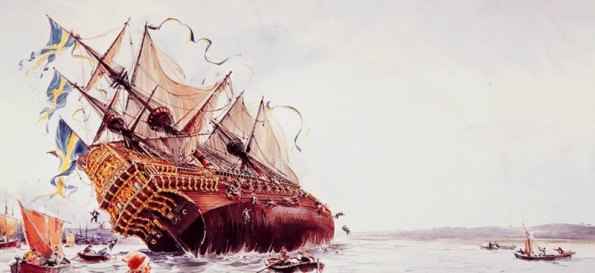
From a painting that I found on the internet.

A photograph I took of a plaque in the museum.
In 1961 during the investigation inside the vessel they found the remains of at least fifteen people.
The ship had survived complete destruction throughout her 333 years under water due to a number of factors.
The salinity of the water where she sank is very low so ship-worms can not survive, the waters around the wreck didn’t have any, or very limited amount, of oxygen in it, and the temperature of the water was very low between 1 to 5 c, (just above freezing). The ship was built of oak heartwood, which had a high iron content, plus the vessel was new when it sank.
When they found the Vasa they had to come up with a way of lifting her from the seabed without damaging the wreck itself. The system they used was very similar to the first attempt to float the Vasa, which was a few days after she sank. They used a system of ‘camels’, which has been used by most navies for hundreds of years, when sailors wished to reduce the draft of a vessel in shallow waters.
In the case of the Vasa it took two years for divers to create six tunnels under the wreck, because she was so deep in the mud. They could not risk attaching grab claws in case they damaged her. It took 1300 very dangerous dives to create the tunnels through which wire ropes were passed. The ends of the wire ropes were attached to two barges on the surface, which had been filled with water, so they were low in the water. The water in the barge was pumped out causing the barges to rise, and so hopefully raise the Vasa enough to break the grip of the mud that had half buried her during the last 300 odd years.
Each time she moved the surface crew would tighten the wire ropes fill the barges with water again so they sank a little, tighten the wire rope again, and pump out the water, causing the barges to rise, and drag the Vasa up further. During the months of August and September 1959 after eighteen ‘lifts’ she had been raised 16 meters (105 ft) from the seabed, but was still about 16 meters under the water. This allowed the wreck to be moved to a more sheltered area, which would allow divers to do further investigations.

I found this on the internet, which is a good illustration of a ‘camel’ in operation.
Parts of the Vasa had broken away and buried in the sea mud. These parts were rescued, cleaned and reattached correctly. The reconstructed vessel today is 98% of the original. Apparently they have found 40,000 artifacts in and around the ship, which has opened new knowledge of life at that time.

Not all that much different to the sea chest issued to me when I joined HMS Conway in 1960.

This was my first impression of the Vasa during my recent visit. The whole building is atmospherically controlled to protect the ship from decomposing, and they try to keep the temperature at a level that is acceptable to the public.
The ship is HUGE!

A clear view off the gun-ports

Obviously the rigging is new
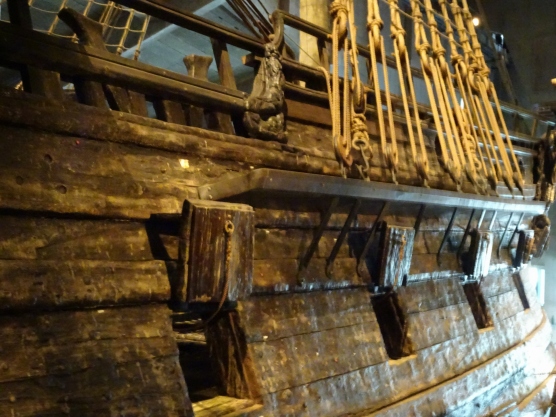
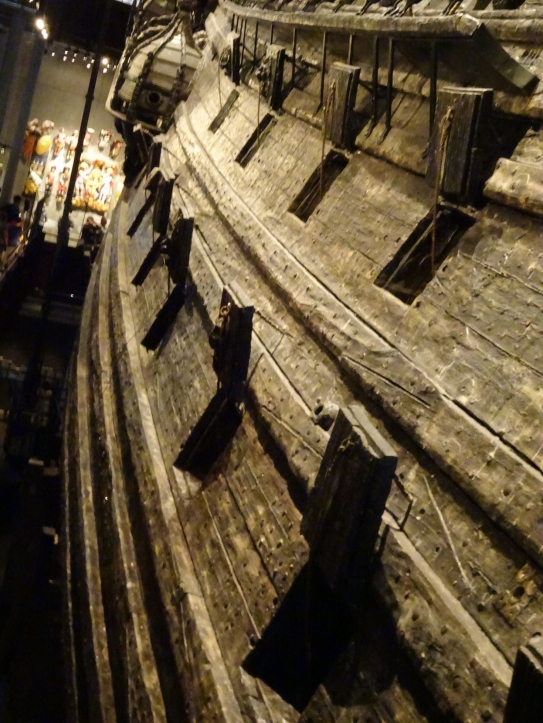

The main deck had to be replaced because it had been damaged over the years when many of the cannon had been removed.

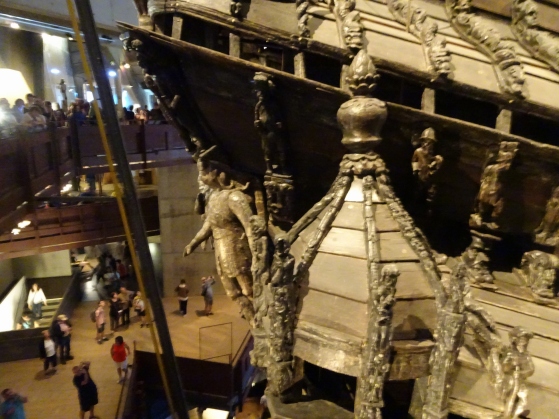
As one moves aft towards the captain’s & officer’s accommodation area we see the artistry of the carvings clearly. The stern area would have been bolted to the main ship with iron bolts and as time went on, the iron would have rusted away and the accommodation collapsed in to the mud. When this area was recovered they found that the mud had saved some of the figure’s colour, so that scientists could work out the correct colouring. The accommodation was reattached.
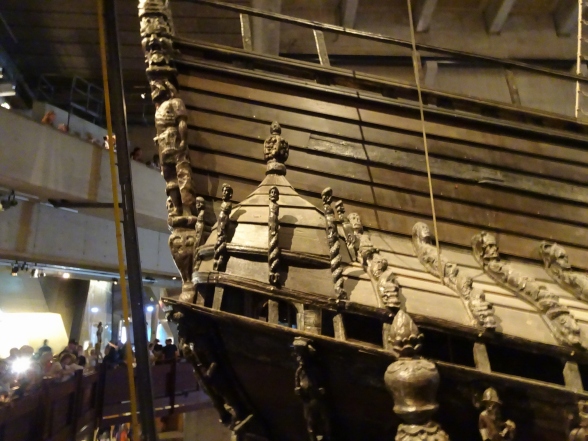
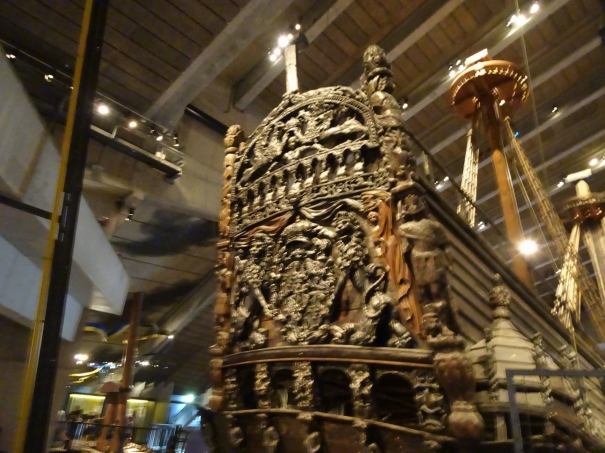
The stern with the detailed carvings still available to be seen.


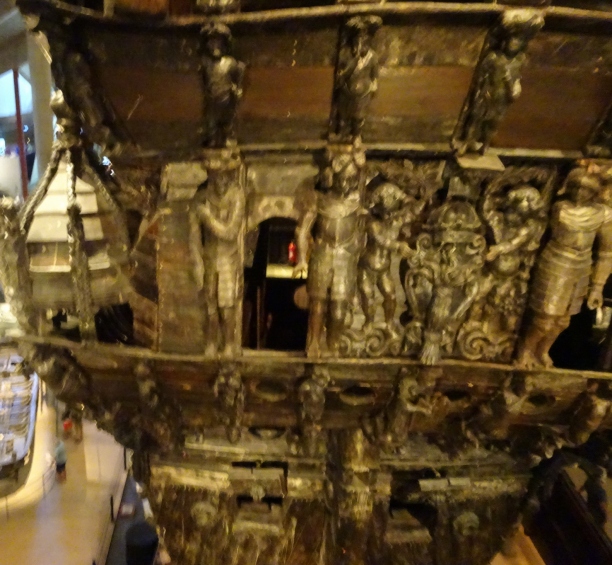
I stood on a platform at the stern to take this photograph (with many other ‘clickers’) which was about two floors up – note the size of the person on the bottom left of the picture which gives an idea of the ship’s size.
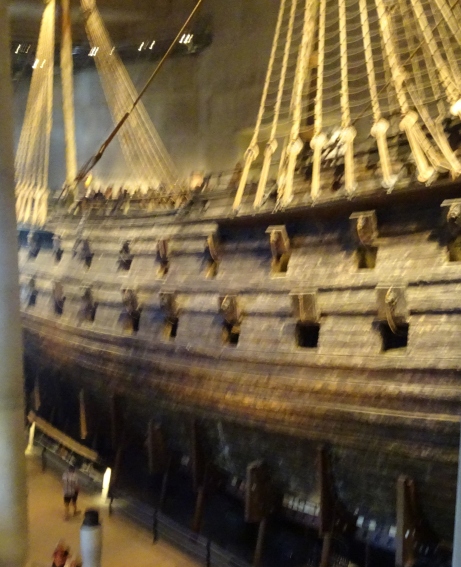
An easier picture to illustrate the vessels size compared to the people underneath.

Three cannon bronze were rescued, most of the others had been removed from the Vasa in the 17th century.
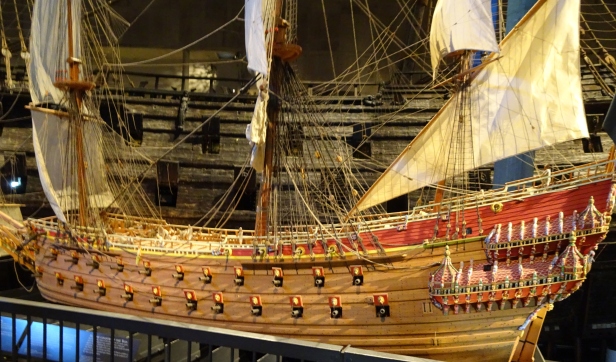
A model of what she would have looked like on the day she sailed.
 The colourful stern.
The colourful stern.
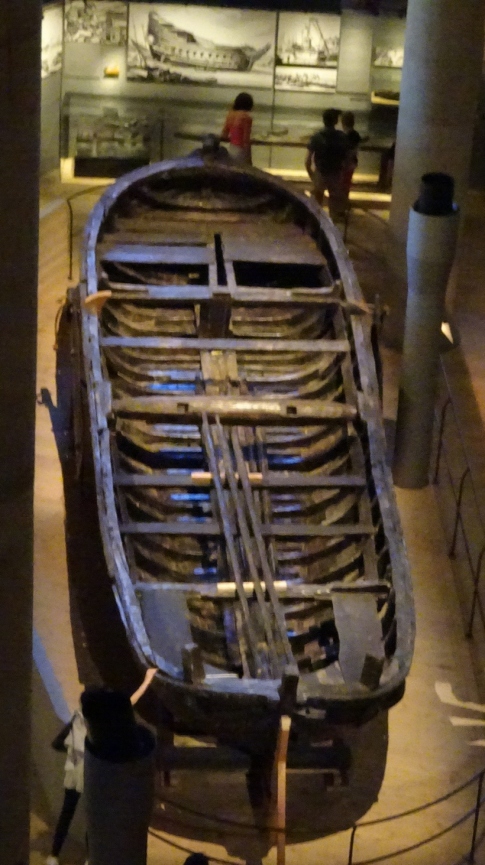
A longboat found lying next to the Vasa and believed to have been one of the boats towed by the her as she sailed out of port.

Port side of the Vasa with the longboat, along with some tourists so as to compare size.
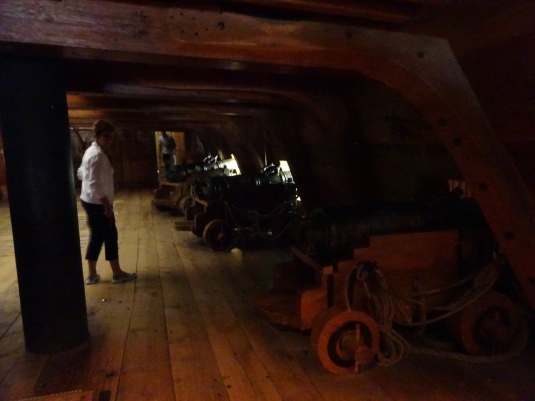
The museum has recreated the a gun deck (not on the ship but alongside the Vasa. As you see an average person can stand with ease. The guns are all replicas.

The museum has also created a scale model of life below decks.

One can see the stone ballast at the bottom, which was not enough to keep her upright.
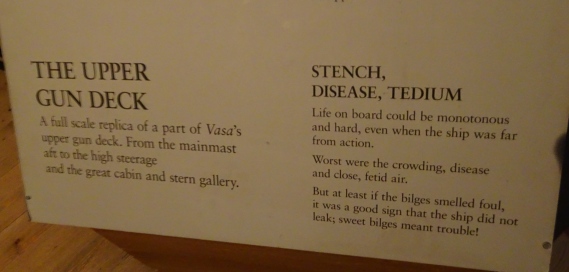
To see how they started to clean her click on VASA after the first minute the cleaning can be seen.
Tried to buy a booklet of the history of salvaging Vasa, they had a book stand with the booklet in about fifteen different languages, but unfortunately not in English, they’d sold out.
I blame all those cruise ship visitors! :- o)
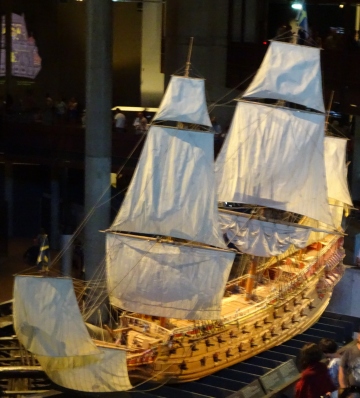

 At 122, 000 gt, I thought that perhaps Celebrity Silhouette was too large to berth in Stockholm, and this was the reason why we berthed at Nynashamn, which is forty five minutes, by coach, from Stockholm.
At 122, 000 gt, I thought that perhaps Celebrity Silhouette was too large to berth in Stockholm, and this was the reason why we berthed at Nynashamn, which is forty five minutes, by coach, from Stockholm. It was all very picturesque.
It was all very picturesque. Once we’d arrived and the ship was moored a floating pier edged its way out to us and was secured for the passengers to disembark. The dark blue floats that can be seen is the floating pier / walkway.
Once we’d arrived and the ship was moored a floating pier edged its way out to us and was secured for the passengers to disembark. The dark blue floats that can be seen is the floating pier / walkway. Perfect weather for viewing Stockholm. As I mentioned earlier I did see a couple of cruise ships in Stockholm, but they were much smaller than the Celebrity Silhouette, about 46,000 gt. each.
Perfect weather for viewing Stockholm. As I mentioned earlier I did see a couple of cruise ships in Stockholm, but they were much smaller than the Celebrity Silhouette, about 46,000 gt. each.












 Found this on the internet – Nobel Prize Ball in the Gold Room.
Found this on the internet – Nobel Prize Ball in the Gold Room. Back to the coach for the next stop – the view across the lake from the City Hall.
Back to the coach for the next stop – the view across the lake from the City Hall. Bonde Palace, which has been restored inside to it’s original 17th & 18th century design and is currently the seat of the Supreme Court of Sweden.
Bonde Palace, which has been restored inside to it’s original 17th & 18th century design and is currently the seat of the Supreme Court of Sweden. 
 We We’ve arrived in the Palace area.
We We’ve arrived in the Palace area.












 Copenhagen is located on the island of Zealand.
Copenhagen is located on the island of Zealand.


 The above is an earlier Mermaid, note the difference in the position of her head.
The above is an earlier Mermaid, note the difference in the position of her head.








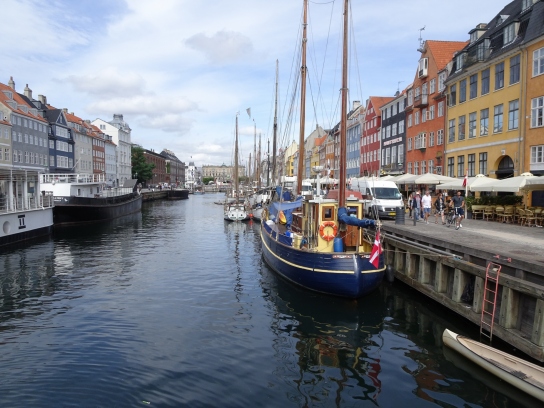





 Sunrise Zeebruge Harbour earlier this year, pictures taken from our balcony.
Sunrise Zeebruge Harbour earlier this year, pictures taken from our balcony.

 Daffodil arriving back in the Mersey after emergency repairs at Chatham
Daffodil arriving back in the Mersey after emergency repairs at Chatham



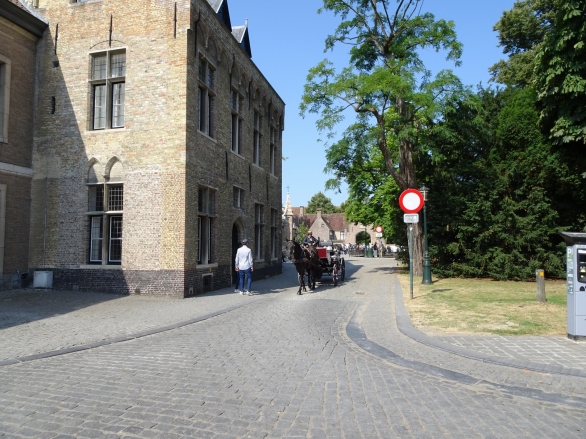




 We were in the old part of the town and making our way to the main market square. The central building with the cross on the top was built in 1713 as a place for destitute women – an alms house in English. It is still used today for the elderly of small means.
We were in the old part of the town and making our way to the main market square. The central building with the cross on the top was built in 1713 as a place for destitute women – an alms house in English. It is still used today for the elderly of small means.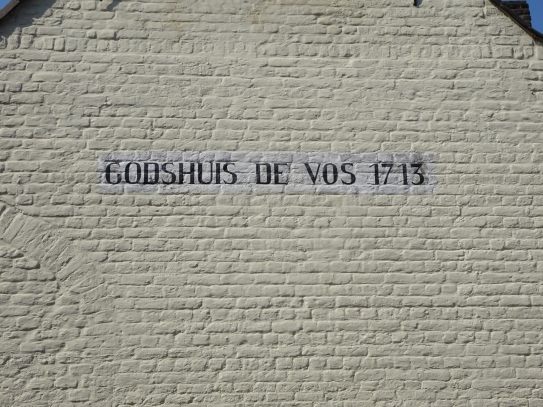














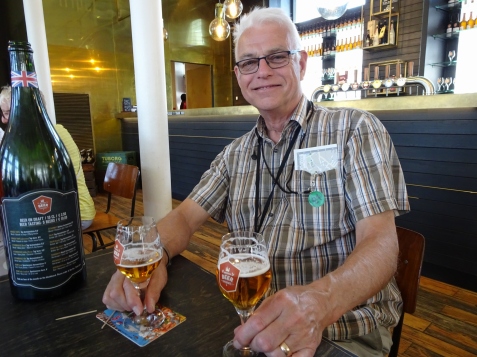






 She is marketed to the German market, but is registered in Italy. Head office is Rostock in Germany. The company is owned by Carnival Corporation of America.
She is marketed to the German market, but is registered in Italy. Head office is Rostock in Germany. The company is owned by Carnival Corporation of America.









 This gives one a hint of the local population – on the right note the sign KJ’s Mobility, and all along in front of the shop are electric wheel chairs of various sizes and power.
This gives one a hint of the local population – on the right note the sign KJ’s Mobility, and all along in front of the shop are electric wheel chairs of various sizes and power.







 At the end of the pier, near where we boarded the ferry, it was sad to see the superstructure so weather beaten. But I wonder if I will look as good when I am 137 years old . . . .
At the end of the pier, near where we boarded the ferry, it was sad to see the superstructure so weather beaten. But I wonder if I will look as good when I am 137 years old . . . .
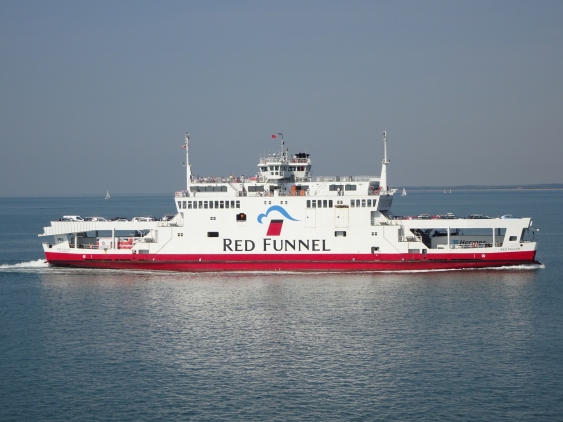





 Perhaps it was the wine that I recognised rather than the yacht. She was the Cloudy Bay from New Zealand. A long way from home.
Perhaps it was the wine that I recognised rather than the yacht. She was the Cloudy Bay from New Zealand. A long way from home.
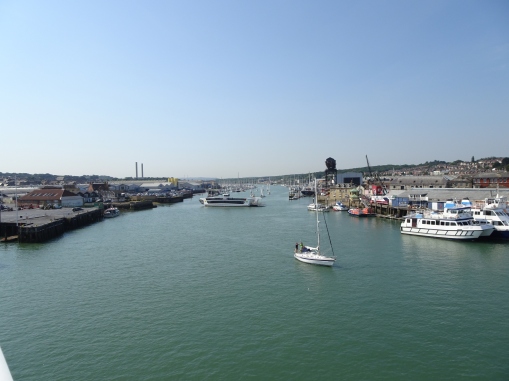


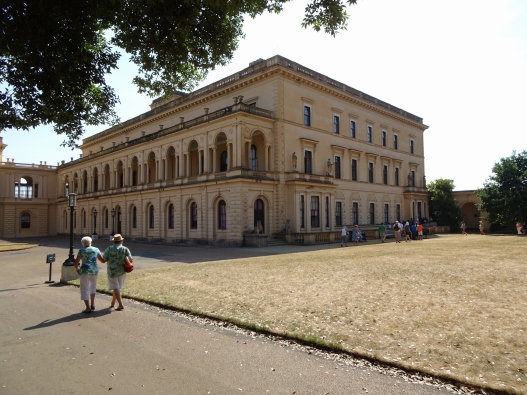
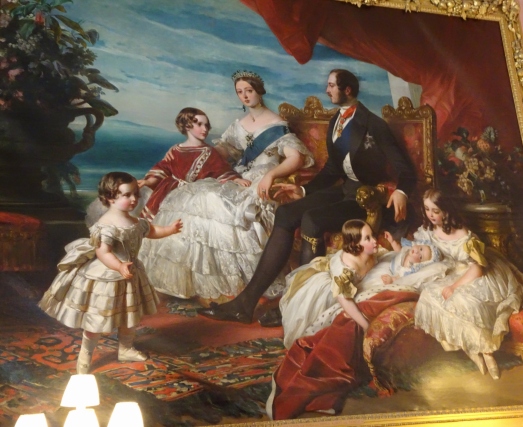

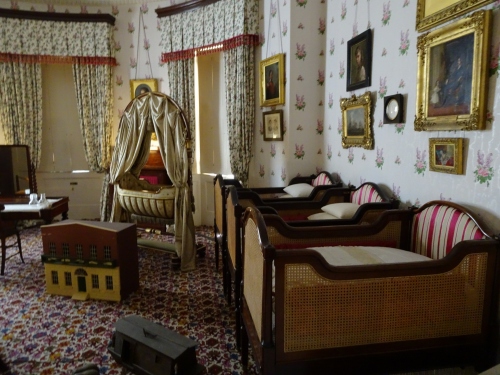



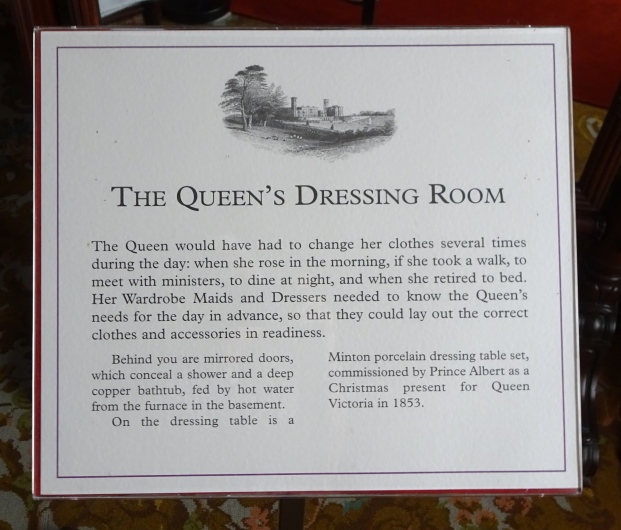

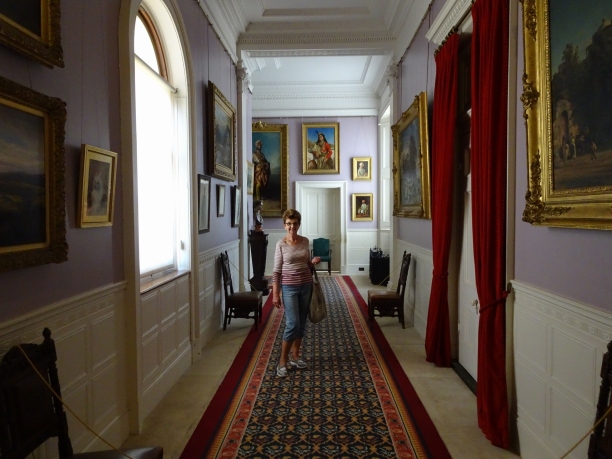




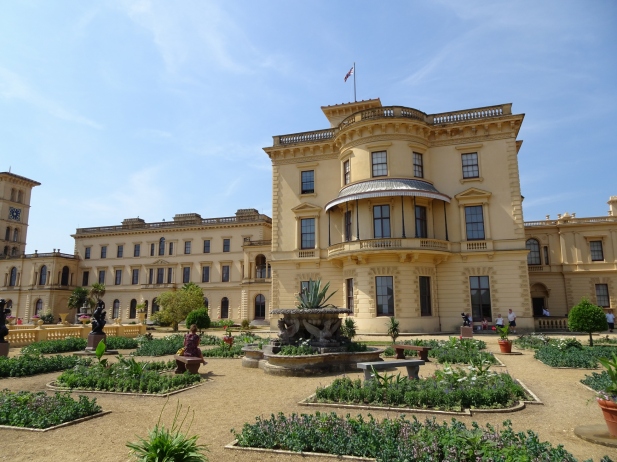

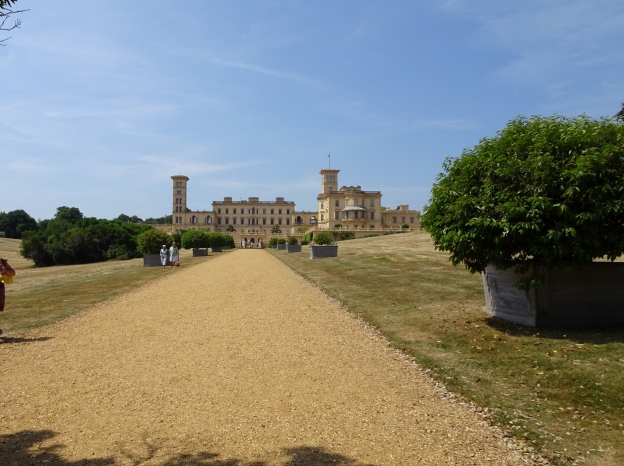



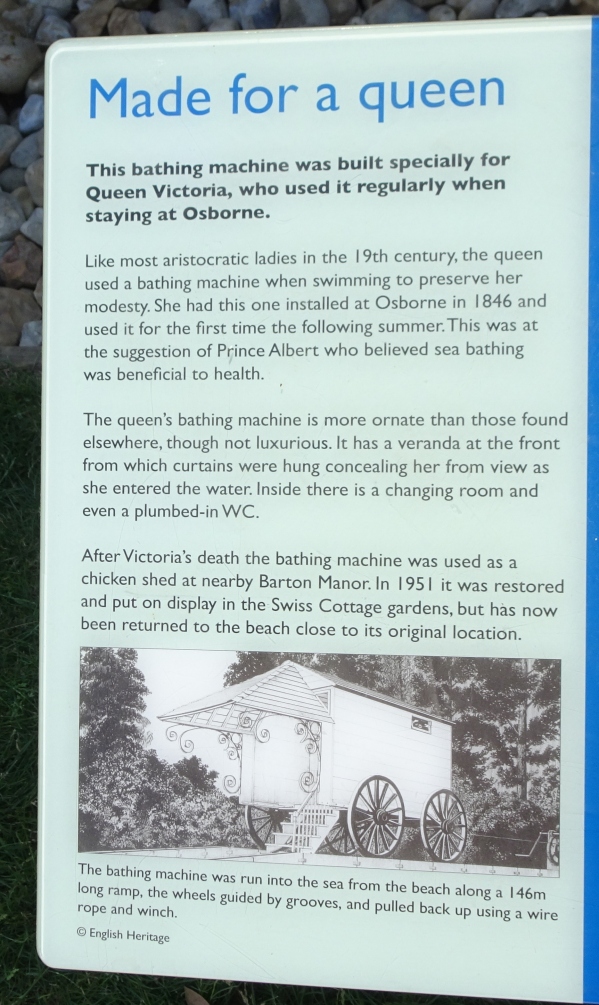



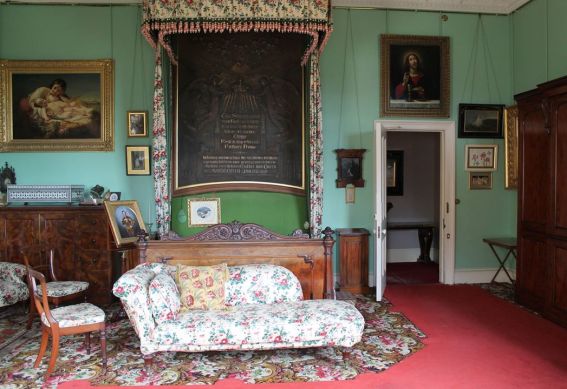
 A twenty minute walk back to the bus stop in front of Osborne House and we were soon at the harbour waiting for the ‘floating bridge’ to take us over to West Cowes. You can see the chains on both sides of the ‘vessel’ as she hauled herself across the harbour.
A twenty minute walk back to the bus stop in front of Osborne House and we were soon at the harbour waiting for the ‘floating bridge’ to take us over to West Cowes. You can see the chains on both sides of the ‘vessel’ as she hauled herself across the harbour.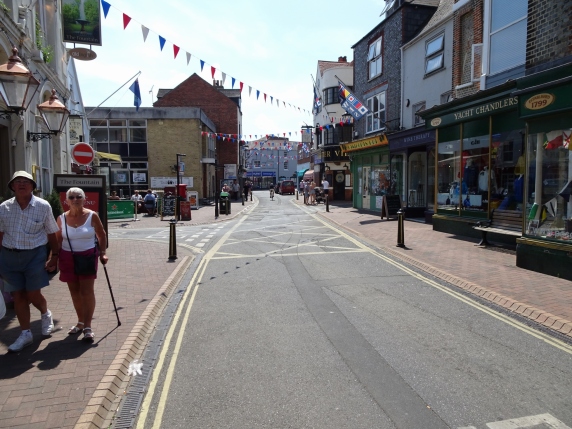
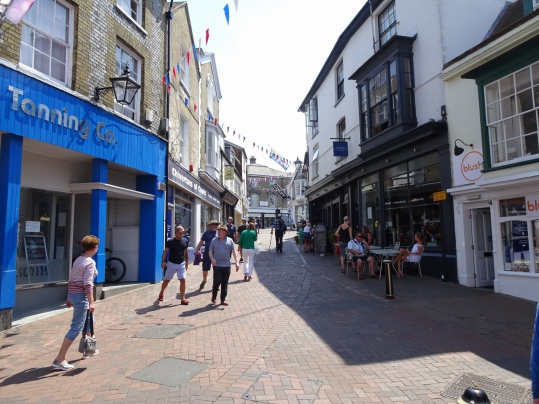
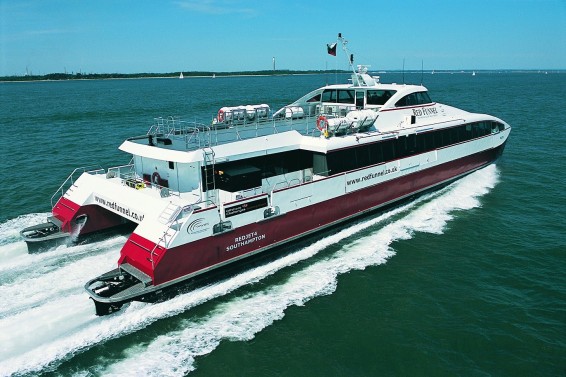


 As we sailed down the Solent in the Celebrity Silhouette for the start of our cruise to the Baltic, SS Shieldhall was returning to Southampton (top picture), and as the two ship passed each other they used their sirens to signal bon voyage.
As we sailed down the Solent in the Celebrity Silhouette for the start of our cruise to the Baltic, SS Shieldhall was returning to Southampton (top picture), and as the two ship passed each other they used their sirens to signal bon voyage. We were a little larger than the ‘sludge boat’ at 122,210 gt
We were a little larger than the ‘sludge boat’ at 122,210 gt London Hotel on the junction of Oxford Street and Terminus Terrace, in Southampton.
London Hotel on the junction of Oxford Street and Terminus Terrace, in Southampton.
 Had to sample a local ale . . .
Had to sample a local ale . . . As I drank the face disappeared, thankfully.
As I drank the face disappeared, thankfully. This building was the Terminus Station, and the families of the survivors off the Titanic waited here for word of their loved ones.
This building was the Terminus Station, and the families of the survivors off the Titanic waited here for word of their loved ones. The hotel on the right was South Western House, and passengers could alight from the train and walk from the platform in to the hotel. It was ‘the’ place to stay while waiting for your trans Atlantic liner.
The hotel on the right was South Western House, and passengers could alight from the train and walk from the platform in to the hotel. It was ‘the’ place to stay while waiting for your trans Atlantic liner.
 The rear area of all our yesterdays. . .
The rear area of all our yesterdays. . . The front of South Western House today.
The front of South Western House today. No longer a hotel, because the rooms were converted in to 77 apartments in 1998.
No longer a hotel, because the rooms were converted in to 77 apartments in 1998. Across the road from South Western House I found a tailor that I used (only once) in Liverpool during my time at sea. The sign was the only indication that the derelict building had once been famous.
Across the road from South Western House I found a tailor that I used (only once) in Liverpool during my time at sea. The sign was the only indication that the derelict building had once been famous. Union Castle Line
Union Castle Line
 Back to Oxford Street and across the road from the London Hotel we found The Grapes. Unfortunately we never did manage a drink in the Grapes.
Back to Oxford Street and across the road from the London Hotel we found The Grapes. Unfortunately we never did manage a drink in the Grapes. Over the top of the main door I’ve blown up the picture of the Titanic.
Over the top of the main door I’ve blown up the picture of the Titanic.

 He survived because he had been ordered to be a rower in one of the lifeboats –
He survived because he had been ordered to be a rower in one of the lifeboats –
 Moody Cup
Moody Cup
 Where ever we went in Southampton we came a cross history, whether from a few years ago to over a thousand years ago.
Where ever we went in Southampton we came a cross history, whether from a few years ago to over a thousand years ago.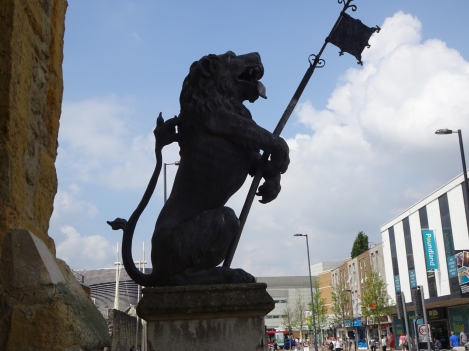 He still guards Bargate, and watches over the peace of the town.
He still guards Bargate, and watches over the peace of the town. King Canute’s name was also spelt as Cnut, but I don’t know where the ‘Knut’ originated. He was crowned King of England in the old St Pauls cathedral, London, in 1017. He was also the King of Denmark and Norway.
King Canute’s name was also spelt as Cnut, but I don’t know where the ‘Knut’ originated. He was crowned King of England in the old St Pauls cathedral, London, in 1017. He was also the King of Denmark and Norway. A short walk further on from Bargate we came across the Dolphin Hotel where it is said that Jane Austen celebrated her 18th birthday on the 16th December 1793. Later she lived in Southampton from 1808 to 1809. The home in which she lived has gone and on the empty plot a pub was built.
A short walk further on from Bargate we came across the Dolphin Hotel where it is said that Jane Austen celebrated her 18th birthday on the 16th December 1793. Later she lived in Southampton from 1808 to 1809. The home in which she lived has gone and on the empty plot a pub was built. It looks Tudor and older than it is, I think it was built around 1870.
It looks Tudor and older than it is, I think it was built around 1870. A view inside the current pub, the flags were for the football competition in Russia.
A view inside the current pub, the flags were for the football competition in Russia. Not too far from the pub is an old church dedicated to the members of the Merchant Navy. It is called Holyrood church and is known to be in existence during the reign of Henry II in 1160. It was originally built at another location, but in 1320 it was demolished and rebuilt at its present location. It has been a place of worship for the Crusaders, soldiers heading to Agincourt, and Phillip II of Spain in 1554 when he was travelling to Winchester to marry Queen Mary.
Not too far from the pub is an old church dedicated to the members of the Merchant Navy. It is called Holyrood church and is known to be in existence during the reign of Henry II in 1160. It was originally built at another location, but in 1320 it was demolished and rebuilt at its present location. It has been a place of worship for the Crusaders, soldiers heading to Agincourt, and Phillip II of Spain in 1554 when he was travelling to Winchester to marry Queen Mary. It is now a memorial church to Merchant Seamen, because it has always been linked to sailors. Southampton lost 538 of her seaman when the R.M.S Titanic sank. Of approximately 900 crew on the Titanic, 685 were from Southampton.
It is now a memorial church to Merchant Seamen, because it has always been linked to sailors. Southampton lost 538 of her seaman when the R.M.S Titanic sank. Of approximately 900 crew on the Titanic, 685 were from Southampton.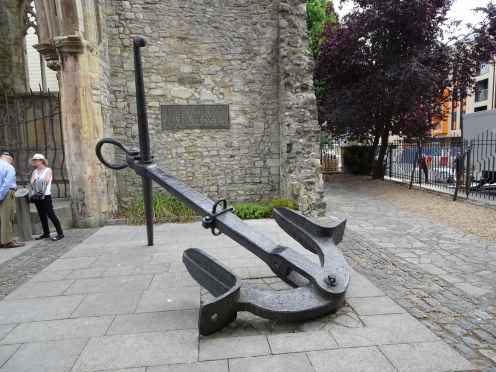
 The plaque on the wall near the anchor.
The plaque on the wall near the anchor. A later memorial.
A later memorial. On the pavement at the front of the church is this anchor from QE2, she is still afloat and has been converted to being a hotel on the waterfront in Dubai.
On the pavement at the front of the church is this anchor from QE2, she is still afloat and has been converted to being a hotel on the waterfront in Dubai. During the bombing the lectern from Holyrood was rescued as the church burned.
During the bombing the lectern from Holyrood was rescued as the church burned. It is the oldest brass eagle lectern in the country dating back to around 1420. It took two men all their strength to carry the lectern to safety, and is now used in St Michael’s church. The jewels are missing from its eyes, and there is some damage on its wings. During the English civil war it was painted brown to look like wood so that it wouldn’t be melted down.
It is the oldest brass eagle lectern in the country dating back to around 1420. It took two men all their strength to carry the lectern to safety, and is now used in St Michael’s church. The jewels are missing from its eyes, and there is some damage on its wings. During the English civil war it was painted brown to look like wood so that it wouldn’t be melted down. St Michael’s church, a block away from Holyrood, St Michael’s is the oldest building still in use in Southampton.
St Michael’s church, a block away from Holyrood, St Michael’s is the oldest building still in use in Southampton. The view inside St Michael’s
The view inside St Michael’s I saw this model of the ‘Mayflower‘ in St Michael’s church.
I saw this model of the ‘Mayflower‘ in St Michael’s church. This was our destination close to the waterfront.
This was our destination close to the waterfront.

 Restaurant upstairs – bar downstairs, or outside in the sun.
Restaurant upstairs – bar downstairs, or outside in the sun. They have seven different beers, all brewed on the premises, so I thought I’d have a drop of Jesus’, the taste was another miracle. Jesus turned water in to wine, and the Dancing Man turned water in to beer.
They have seven different beers, all brewed on the premises, so I thought I’d have a drop of Jesus’, the taste was another miracle. Jesus turned water in to wine, and the Dancing Man turned water in to beer. We were never far from a touch of history. The above shows the original walls of the old town. On the right the modern building is a shopping centre.
We were never far from a touch of history. The above shows the original walls of the old town. On the right the modern building is a shopping centre. Even inside a shopping centre they had created a feeling of yester-year. I took the photograph and behind me were very modern shops.
Even inside a shopping centre they had created a feeling of yester-year. I took the photograph and behind me were very modern shops. Beach Rules but where is the beach?
Beach Rules but where is the beach? Is it only the British who sit in deckchairs row after row?
Is it only the British who sit in deckchairs row after row?
 Picture taken of the Cross of St George the English flag, above Bargate, Southampton.
Picture taken of the Cross of St George the English flag, above Bargate, Southampton. Bargate – Southampton . . .
Bargate – Southampton . . . We walked out of our hotel in to a very quiet terminus at 6.00 am, to check-in for our flight to London.
We walked out of our hotel in to a very quiet terminus at 6.00 am, to check-in for our flight to London. When was the last time that you saw empty self-check-in machines?
When was the last time that you saw empty self-check-in machines? Photographs must have been taken during the night – nicely posed.
Photographs must have been taken during the night – nicely posed. A light breakfast perhaps – not too much as to ruin the appetite for brunch on the plane .
A light breakfast perhaps – not too much as to ruin the appetite for brunch on the plane . The lounge was not all that far from the boarding area so we had plenty of time for breakfast and to watch the airport traffic.
The lounge was not all that far from the boarding area so we had plenty of time for breakfast and to watch the airport traffic. One must admit that Singapore airport authority have created a relaxing environment for those travelling in tubes of metal across the world. The above is an advert with a fountain (the white circle), which didn’t come out as planned. More fountains below
One must admit that Singapore airport authority have created a relaxing environment for those travelling in tubes of metal across the world. The above is an advert with a fountain (the white circle), which didn’t come out as planned. More fountains below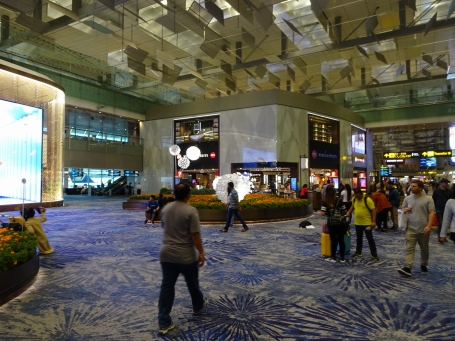
 As we sped down the runway the Singapore Airlines planes were everywhere, so is it any wonder that in the near future they will be flying an ultra long range aircraft A350-900ULR none stop to New York. It’ll take nineteen hours, and only carry business and premium economy seats. Our flight from Singapore to London would take us about thirteen hours, which is long enough for me.
As we sped down the runway the Singapore Airlines planes were everywhere, so is it any wonder that in the near future they will be flying an ultra long range aircraft A350-900ULR none stop to New York. It’ll take nineteen hours, and only carry business and premium economy seats. Our flight from Singapore to London would take us about thirteen hours, which is long enough for me.


 On a happier note it was time for brunch.
On a happier note it was time for brunch. The lighting had been dulled a little for those who wished to sleep, hence the coloured reflection. Prawns and scallops, and of course a glass of white wine, it was 5.00 pm somewhere in the world!
The lighting had been dulled a little for those who wished to sleep, hence the coloured reflection. Prawns and scallops, and of course a glass of white wine, it was 5.00 pm somewhere in the world! More fish – Maureen was proud of me considering fish is my least favourite food.
More fish – Maureen was proud of me considering fish is my least favourite food. I think this was called a Tarrufo Limoncello – what ever it was called it was very nice.
I think this was called a Tarrufo Limoncello – what ever it was called it was very nice.
 and of course cheese to finish – this meal was a very pleasant way of spending an hour or so . . . .
and of course cheese to finish – this meal was a very pleasant way of spending an hour or so . . . . England below – the picture is not as clear as I’d hoped, and as we descended, I was hoping that we would pass near Windsor Castle for a photograph – we didn’t. If we did I didn’t see the castle.
England below – the picture is not as clear as I’d hoped, and as we descended, I was hoping that we would pass near Windsor Castle for a photograph – we didn’t. If we did I didn’t see the castle.
 Dining room.
Dining room.